Masanao Ochi
Predictive Process Model Monitoring using Recurrent Neural Networks
Nov 05, 2020
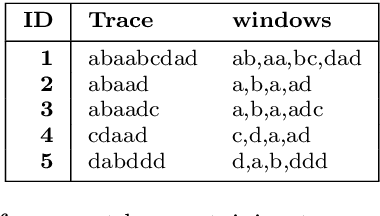
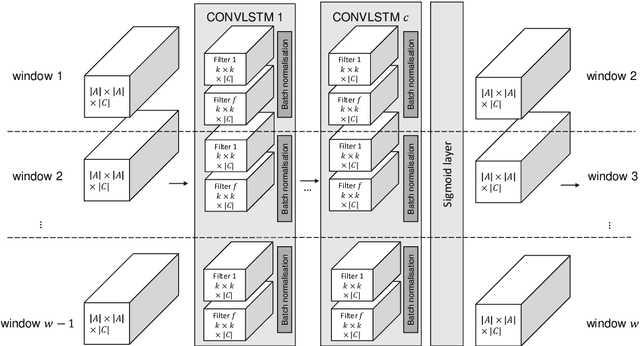

Abstract:The field of predictive process monitoring focuses on modelling future characteristics of running business process instances, typically by either predicting the outcome of particular objectives (e.g. completion (time), cost), or next-in-sequence prediction (e.g. what is the next activity to execute). This paper introduces Processes-As-Movies (PAM), a technique that provides a middle ground between these predictive monitoring. It does so by capturing declarative process constraints between activities in various windows of a process execution trace, which represent a declarative process model at subsequent stages of execution. This high-dimensional representation of a process model allows the application of predictive modelling on how such constraints appear and vanish throughout a process' execution. Various recurrent neural network topologies tailored to high-dimensional input are used to model the process model evolution with windows as time steps, including encoder-decoder long short-term memory networks, and convolutional long short-term memory networks. Results show that these topologies are very effective in terms of accuracy and precision to predict a process model's future state, which allows process owners to simultaneously verify what linear temporal logic rules hold in a predicted process window (objective-based), and verify what future execution traces are allowed by all the constraints together (trace-based).
Understanding Rating Behaviour and Predicting Ratings by Identifying Representative Users
Apr 19, 2016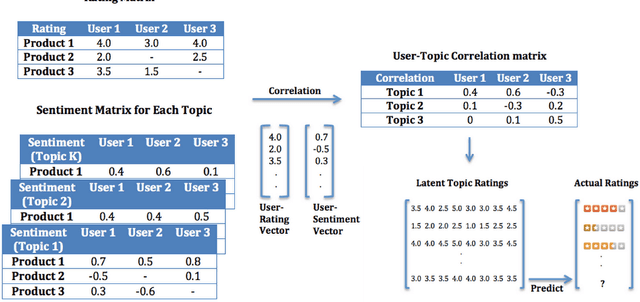
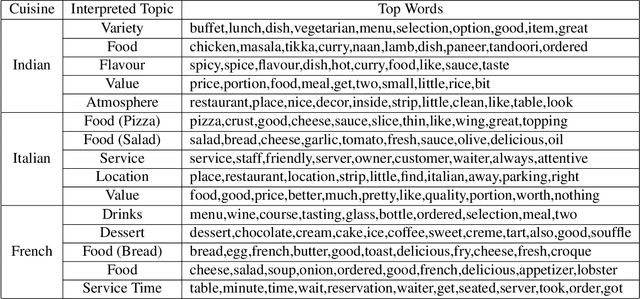
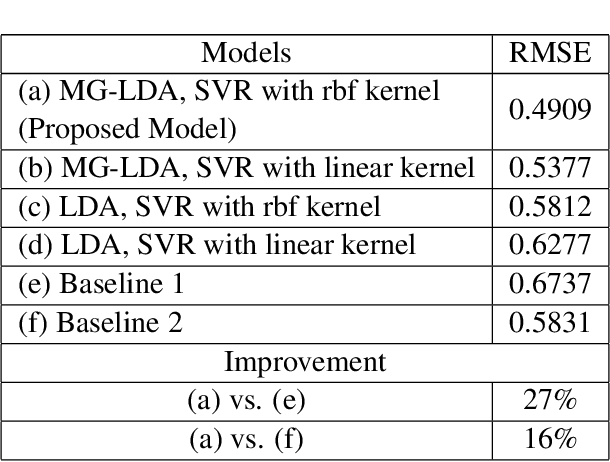
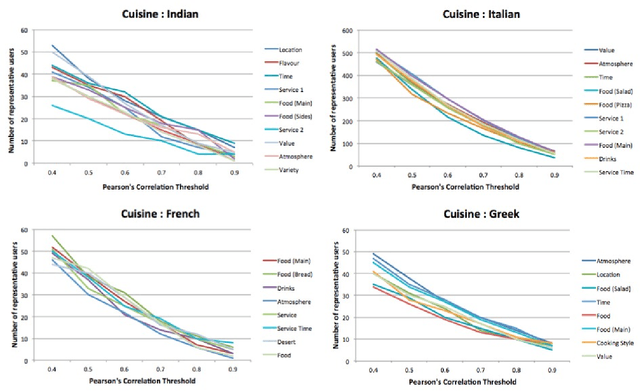
Abstract:Online user reviews describing various products and services are now abundant on the web. While the information conveyed through review texts and ratings is easily comprehensible, there is a wealth of hidden information in them that is not immediately obvious. In this study, we unlock this hidden value behind user reviews to understand the various dimensions along which users rate products. We learn a set of users that represent each of these dimensions and use their ratings to predict product ratings. Specifically, we work with restaurant reviews to identify users whose ratings are influenced by dimensions like 'Service', 'Atmosphere' etc. in order to predict restaurant ratings and understand the variation in rating behaviour across different cuisines. While previous approaches to obtaining product ratings require either a large number of user ratings or a few review texts, we show that it is possible to predict ratings with few user ratings and no review text. Our experiments show that our approach outperforms other conventional methods by 16-27% in terms of RMSE.
 Add to Chrome
Add to Chrome Add to Firefox
Add to Firefox Add to Edge
Add to Edge